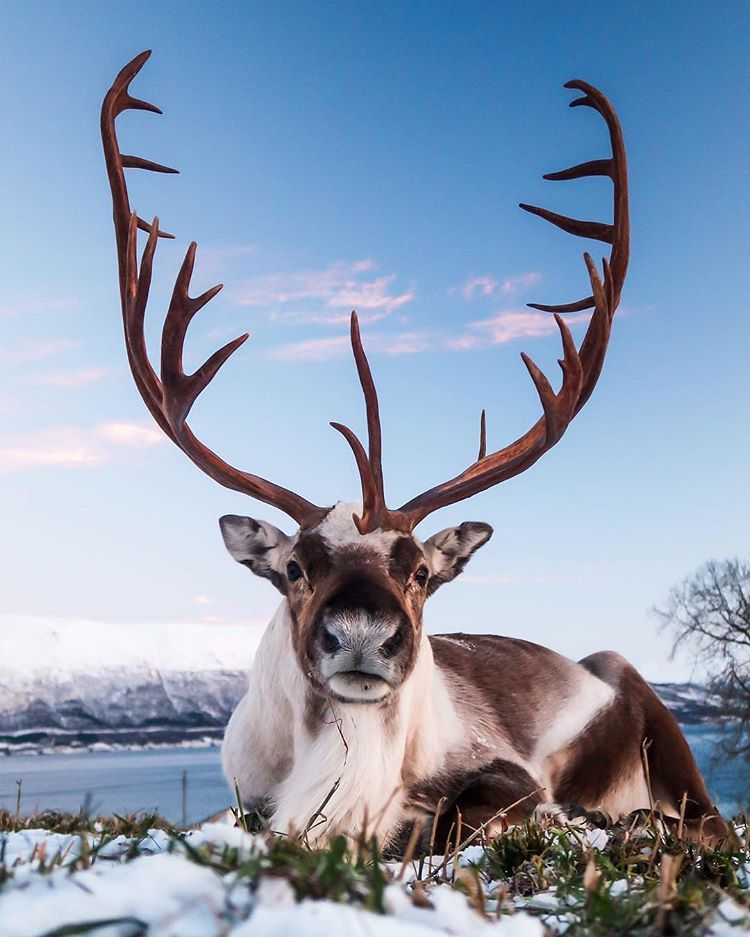Reindeer horns, also known as antlers, are fascinating structures that play a significant role in the lives of these remarkable animals. Found predominantly in the Arctic and Subarctic regions, reindeer are unique among deer species, as both males and females grow antlers. This article delves into the intriguing world of reindeer horns, exploring their growth, functions, and cultural significance, while providing comprehensive insights that are both informative and engaging.
The antlers of reindeer are not only crucial for their survival but also serve as a symbol of the harsh yet beautiful environments they inhabit. Antlers are made of bone and are shed and regrown annually, reflecting the reindeer's health and vitality. Understanding the biology and ecology of reindeer horns offers a glimpse into how these animals adapt to their challenging surroundings and the evolutionary advantages they possess.
In this article, we will explore various aspects of reindeer horns, including their anatomy, growth cycle, and their role in mating and foraging. Additionally, we will discuss the cultural significance of reindeer horns in indigenous cultures and modern society. By the end of this article, readers will have a well-rounded understanding of reindeer horns and their importance in the natural world.
Table of Contents
- Anatomy of Reindeer Horns
- Growth Cycle of Reindeer Antlers
- Functions of Reindeer Horns
- Role in Mating
- Antlers and Foraging Behavior
- Cultural Significance of Reindeer Horns
- Conservation and the Future of Reindeer
- Conclusion
Anatomy of Reindeer Horns
Reindeer horns are one of the most distinctive features of these animals. Unlike regular bones, antlers are made up of a spongy bone structure that is covered in a layer of velvet during the growth phase. This velvet is rich in blood vessels and nerves, supplying nutrients to the growing antlers. As the antlers mature, the velvet eventually sheds, revealing the hard, bony structure underneath.
- Material Composition: Antlers are composed primarily of calcium and phosphate, similar to mammalian bones.
- Size Variation: The size of reindeer antlers can vary significantly between individuals and is influenced by factors such as genetics, age, and nutrition.
- Shape: The shape of antlers can also vary, with some being more branched while others are simpler, depending on the genetic makeup of the reindeer.
Growth Cycle of Reindeer Antlers
The growth cycle of reindeer antlers is a fascinating process that occurs annually. Typically, antlers begin to grow in the spring and are fully developed by late summer. Here’s a breakdown of the growth cycle:
- Spring: Antler growth starts in the spring as daylight increases, triggering hormonal changes in the reindeer's body.
- Summer: During the summer months, antlers grow rapidly and are covered in velvet, which supplies nutrients.
- Autumn: In autumn, the velvet is shed, and the antlers harden, preparing for the rutting season.
- Winter: After the mating season, male reindeer typically shed their antlers, while females retain theirs for a longer period.
Functions of Reindeer Horns
Reindeer horns serve several important functions that are crucial for their survival. Here are some of the key roles that antlers play:
- Defense: Males use their antlers to defend themselves against predators and compete with other males during the mating season.
- Foraging: Antlers help reindeer access food, as they can use them to dig through snow to find lichen and other vegetation.
- Social Status: The size and health of a reindeer's antlers can indicate its fitness and social status within a herd.
Role in Mating
During the mating season, known as the rut, male reindeer engage in fierce battles for dominance and the right to mate with females. Their antlers play a critical role in this competitive behavior:
- Battles: Males will clash their antlers together to establish dominance, showcasing their strength and fitness.
- Attracting Females: Larger and more impressive antlers can attract more females, as they are a sign of good health and genetics.
Antlers and Foraging Behavior
Reindeer are unique in their foraging behavior, and their antlers significantly assist in this process. They primarily feed on lichen, moss, and other vegetation that is often buried under snow:
- Digging: Reindeer use their antlers to dig through snow, uncovering food sources that would otherwise be inaccessible.
- Seasonal Adaptation: The ability to forage effectively is crucial for their survival in harsh Arctic environments.
Cultural Significance of Reindeer Horns
Reindeer horns hold significant cultural value for many indigenous peoples of the Arctic, such as the Sámi in Scandinavia:
- Traditional Uses: Antlers are used to create tools, weapons, and art, reflecting the deep connection between these communities and their natural surroundings.
- Symbolism: In many cultures, reindeer and their antlers symbolize endurance, strength, and the spirit of the wilderness.
Conservation and the Future of Reindeer
As climate change and habitat loss threaten the natural habitats of reindeer, understanding the importance of reindeer horns and their role in the ecosystem becomes critical:
- Habitat Protection: Conservation efforts are focused on protecting the habitats that support healthy reindeer populations.
- Research and Monitoring: Ongoing research is essential to monitor the health of reindeer populations and their antler growth.
Conclusion
Reindeer horns are not just fascinating biological structures; they are integral to the survival and social dynamics of these remarkable animals. From their growth cycle to their role in foraging and mating, reindeer horns encapsulate the resilience and adaptability of life in the Arctic. As we continue to learn about these incredible creatures, it is crucial to support conservation efforts that protect their habitats and ensure their survival for generations to come.
We encourage readers to leave comments, share this article, or explore more content on our site related to wildlife conservation and the fascinating adaptations of animals in extreme environments.
Thank you for reading, and we hope to see you back here soon for more insightful articles!



